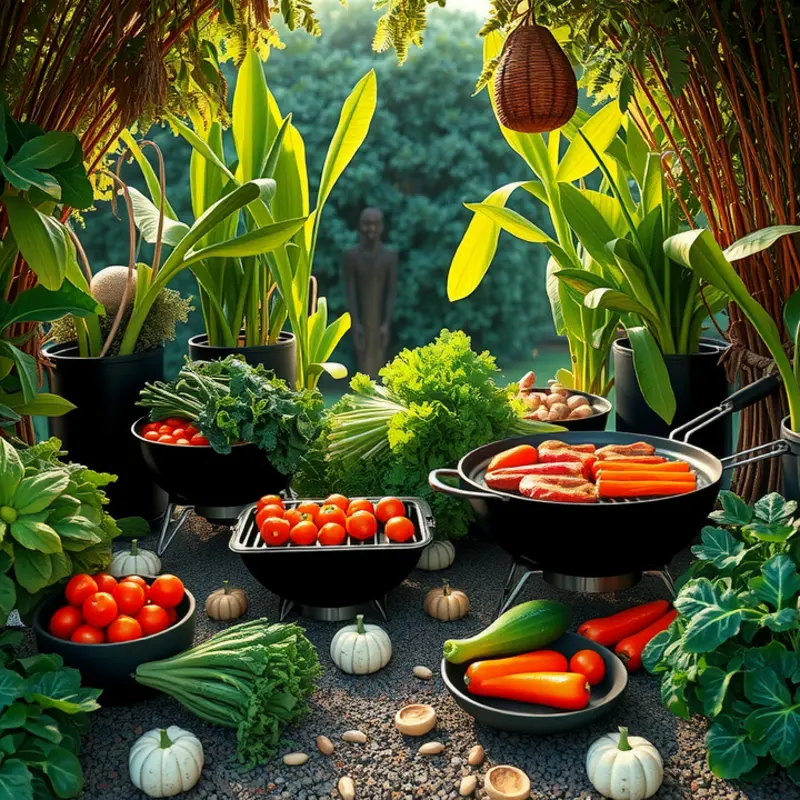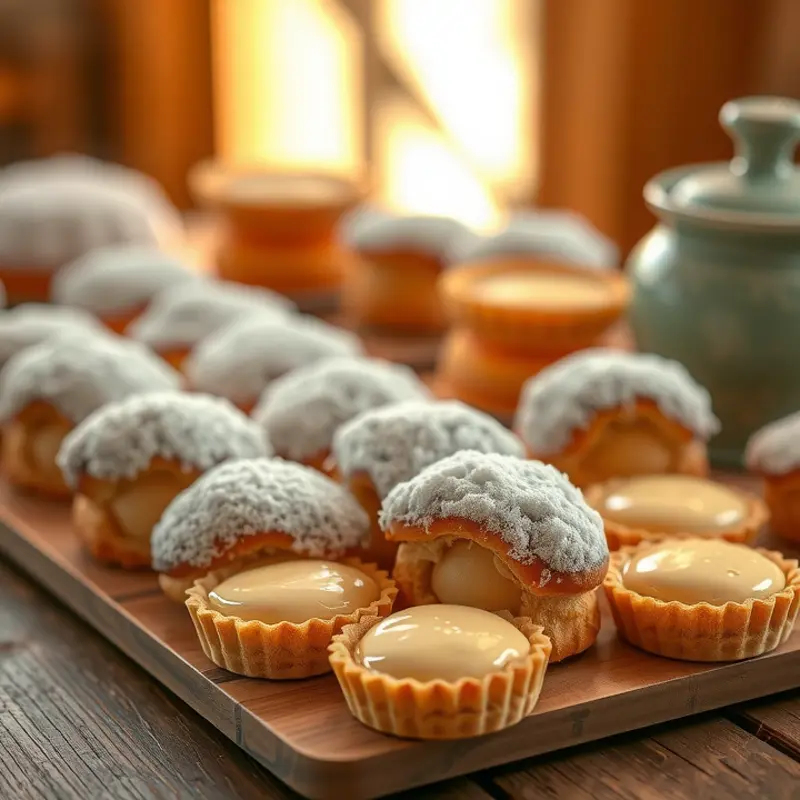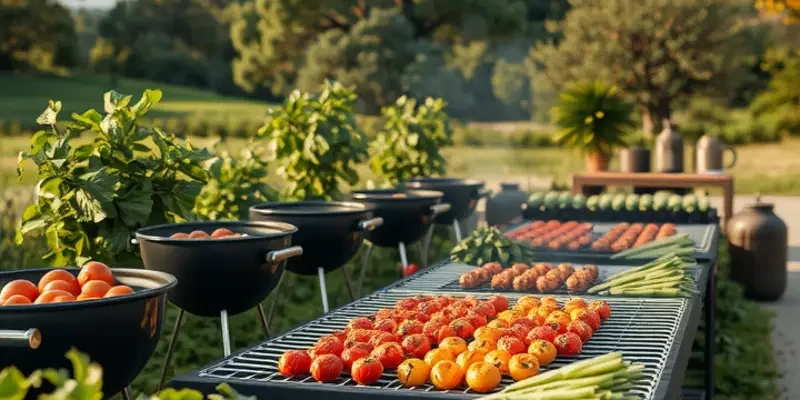With an array of influences from Italy, Spain, and indigenous cultures, Argentinian cuisine offers a delectable experience showcasing diverse flavors and culinary practices. From the iconic asado to the heavenly dulce de leche, each dish tells a story. Let’s embark on a flavorful journey through Argentina’s culinary landscape, discovering how its history and geography shape this vibrant food culture.
A Taste of Tradition: The Asado Experience

Asado is more than just a meal in Argentina; it is a profound cultural tradition that celebrates community and the joy of sharing food. Rooted in the gaucho lifestyle, the Argentine asado, or barbecue, is a cherished ritual that brings family and friends together. It’s an event that transforms simple ingredients into a heartfelt culinary experience, capturing the essence of Argentine social life.
The preparation starts long before meat meets flame. Selecting the right cuts is crucial. Though beef is the centerpiece, lamb and pork often participate. Popular cuts include bife de chorizo (sirloin steak), vacío (flank), and entraña (skirt steak). Sausages, particularly chorizo and morcilla (blood sausage), are must-haves, adding layers of flavor to the spread.
Seasoning is simple; often just using salt and perhaps a hint of pepper. This allows the quality of the meat to shine, underscored by the natural smokiness imparted by the parrilla (grill). Hardwood charcoal or leña (firewood) fuels the fire, providing the meat a unique, friend-enhanced aroma that is synonymous with Argentine identity.
Side dishes are as integral as the main serving. A colorful ensalada mixta featuring lettuce, tomato, and onion, dressed with a drizzle of vinegar and oil, balances the richness of the meats. Chimichurri sauce, a vibrant blend of parsley, garlic, vinegar, and red pepper, enhances each bite, with its fresh and tangy contrast cutting through the fatty cuts.
The gathering’s cadence is leisurely, blurring the lines between preparation and enjoyment. As succulent cuts gradually reach perfection over ember, attendees converse and share stories, their laughter punctuating the air. This communal atmosphere elevates the asado, making it a celebration of life, much like a family reunion around stewardship rather than feasting alone.
Not merely an exercise in culinary prowess, asado reflects an Argentine ethos of simplicity and unity. The thou-shall-share spirit that asado cultivates resonates with a broader, more universal ideology of communal dining experiences fostering bonding. For those passionate about understanding how global culinary traditions shape cultures, our exploration of culinary influences through trade offers intriguing insights.
In this sharing of food and time around the fire, Argentine people find identity and kinship. The asado isn’t just about eating; it’s an expression of hospitality, representing a vibrant landscape of culture and history passed down through generations. The flames of an asado fire not only grill meat, but also warm the soul, preserving a tradition that remains a vital part of the Argentine cultural landscape.
Sweet Indulgences: The World of Dulce de Leche

Dulce de leche, a luscious and creamy caramel-like sauce, holds a cherished spot in Argentinian cuisine. Its roots run deep in the country’s culture, with each spoonful evoking nostalgia and comfort. Originally from the Latin phrase meaning “sweet milk,” dulce de leche is made by slowly heating condensed milk. This process caramelizes the sugars, resulting in a thick, toffee-colored spread that captures the hearts and taste buds of those who indulge in its sweetness.
In Argentina, dulce de leche goes beyond a mere ingredient—it is an integral part of daily culinary rituals. Its preparation involves patience and precision, simmering over low heat until the desired consistency is achieved. This process yields a versatile concoction that is both a standalone delight and a component that elevates various desserts.
Argentine pastries featuring dulce de leche are numerous and varied, with alfajores being among the most beloved. These delectable cookies, often sandwiched with generous dollops of dulce de leche and coated in chocolate or dusted with powdered sugar, are a testament to the sauce’s versatility. Alfajores showcase how dulce de leche can transform a simple biscuit into an exquisite treat, making them a perfect companion to a warm afternoon mate—the popular Argentine tea.
Beyond these cookies, dulce de leche serves as the star of many desserts, such as churros stuffed with the creamy goodness, or as a topping on pancakes and ice cream. Its rich flavor profile and smooth texture make it a soothing indulgence that beckons both the young and the old.
Dulce de leche is not only a culinary treasure but also a cultural icon. Families often have their own secret recipes, passed down through generations, each with a personal twist that creates a unique signature taste. This tradition of crafting homemade dulce de leche fosters a deep sense of connection and pride in Argentina’s culinary heritage.
While some might compare dulce de leche to caramel, its distinctive preparation method and taste set it apart. Caramel is typically made by heating sugar alone, whereas dulce de leche’s base of sweetened milk imparts a richer, more velvety quality. This nuances it perfectly as it graces desserts with an elegance that caramel sometimes lacks.
In exploring how to store this beloved sauce safely, readers might find insights from discussions on safer storage of sauces. Proper storage ensures the quality and longevity of homemade dulce de leche, preserving its creamy texture and flavor.
Uniquely Argentine, dulce de leche captivates both locals and visitors alike, inviting everyone to experience the warmth and sweetness that it embodies. Whether enjoyed in an alfajor, over ice cream, or simply by the spoonful, its presence in Argentinian cuisine is indispensable, weaving together past and present in every rich, indulgent bite.
Final words
Argentinian cuisine is a brilliant mosaic of flavors, traditions, and stories, deeply rooted in the country’s history and culture. The communal aspects of asado and the exquisite sweetness of dulce de leche serve as windows into the heart of Argentina. Whether you explore these dishes in your kitchen or experience them during travels, embracing Argentinian culinary traditions invites a wider appreciation for the rich tapestry of global cuisine. Continue exploring, tasting, and creating, as every meal can steep you further into this flavorful journey.








